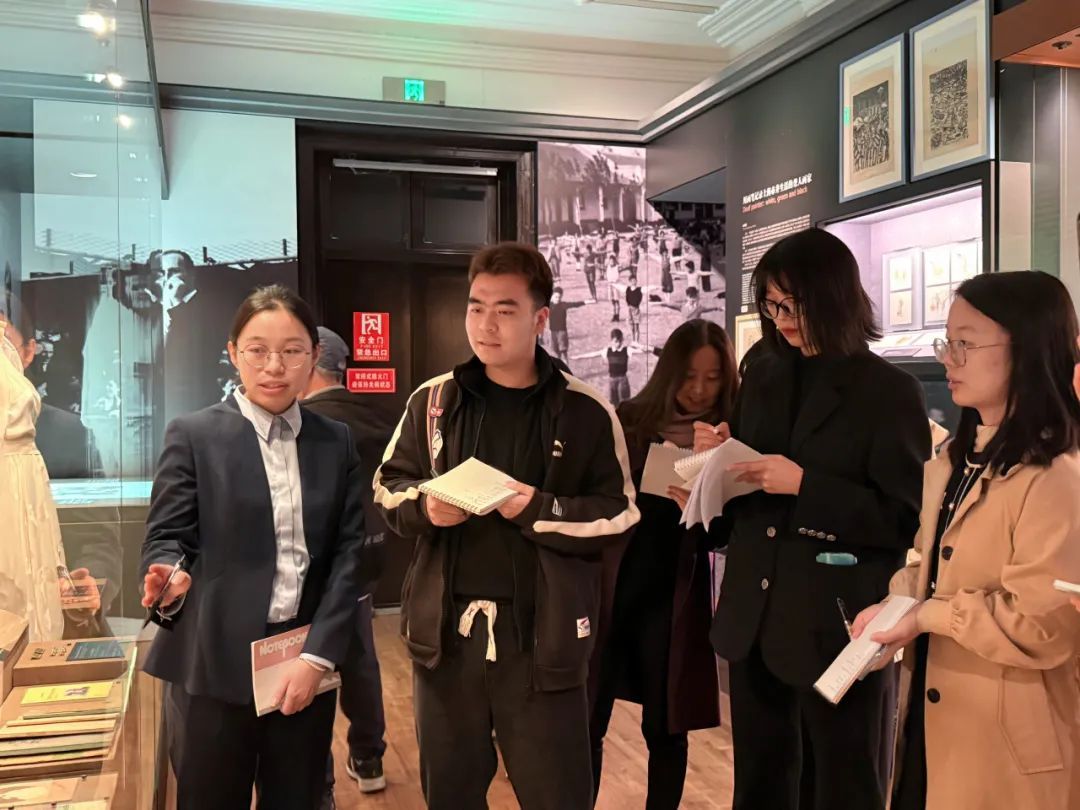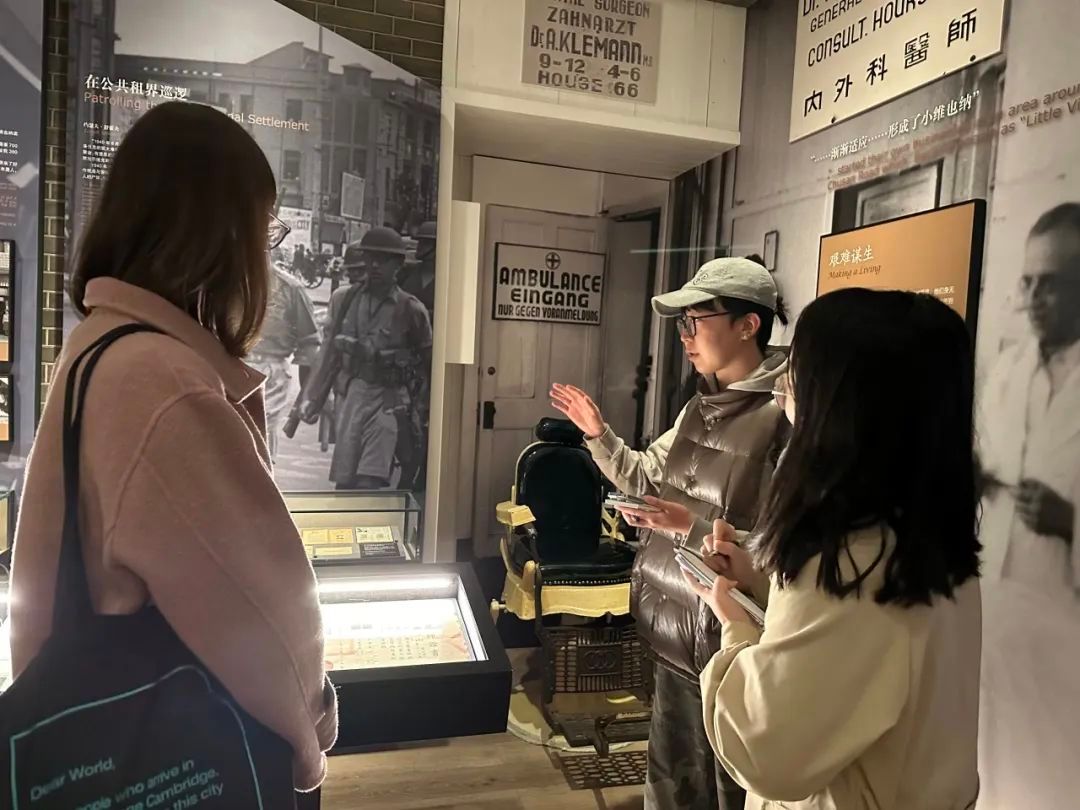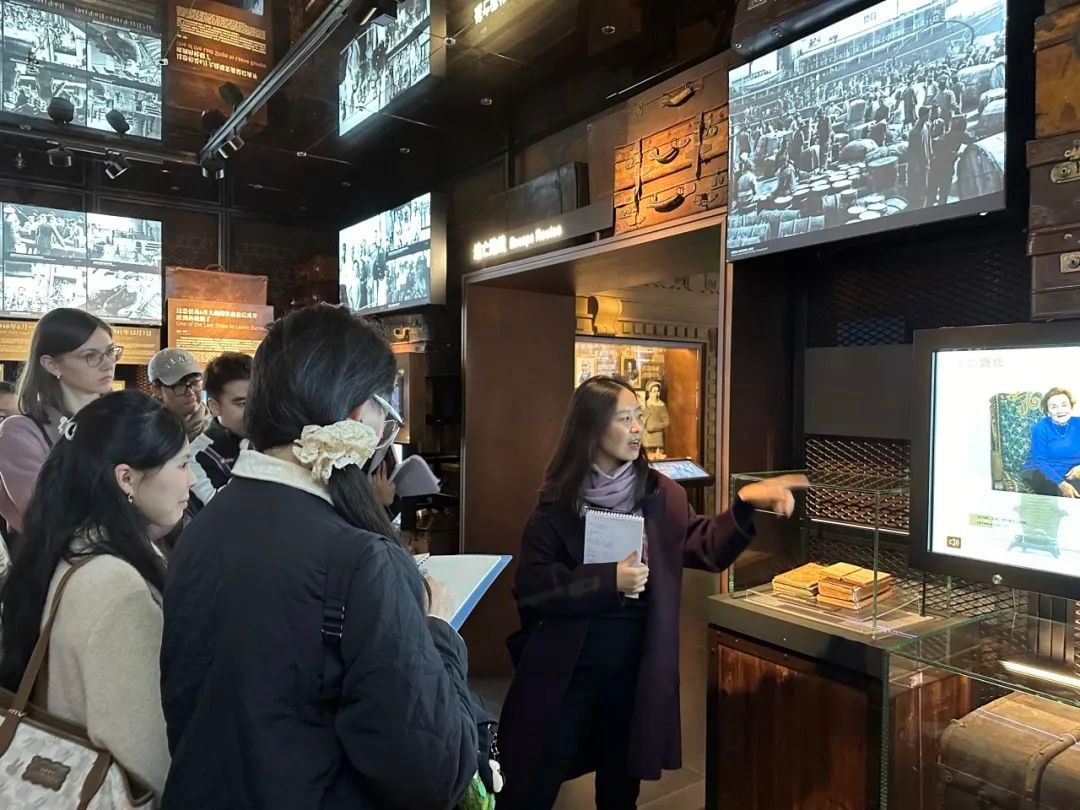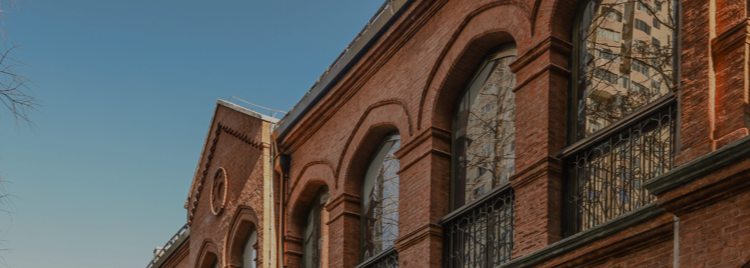On November 20th, more than a dozen Chinese and international students majoring in German Interpreting from the Graduate Institute of Interpretation and Translation (GIIT) of the Shanghai International Studies University (SISU) carried out an on-site real-life scenario interpretation training session in the Museum.
Before the training session, the Museum provided students with rich written materials, including exhibit information, refugee stories, exhibition design, etc., which deepened their understanding of the history of Shanghai Jewish refugees, while at school teachers arranged for students to discuss the topic of "Jewish Refugees in Shanghai" and conduct conversational interpreting practice in class.
"This beautiful wedding dress was donated by Betty, who took shelter in Shanghai for eleven years. It adopts the Chinese front-opening design style. Betty and her two daughters wore this wedding dress when they got married...". The on-site training session was to create a real-life scenario where a Museum docent introduced an exhibit in Chinese, students took turns to translate it to German for the German-speaking visitors. In the meantime, other students would act as oversea audience coming from various background asking all sorts of questions, and the “translator” needed to translate these questions to Chinese for the Museum docent. If the “translator” required help, the supervising teacher would provide tips, corrections or general guidance for the scenario.
The real-life scenario training covered multiple historical exhibits, including the story of Consul- General He Fengshan issuing visas to refugees, the story of Jewish refugees and Chinese neighbors helping each other in Shanghai.

The guide explaining the exhibition content

The students simulating the scene of a visit and reception on the spot

Sun Yu introducing the story of Lilli Fliess to the students
Sun Yu, German-interpreting teacher leading the team, said that this cooperation with the Museum provided students with valuable opportunities to practice their interpreting skills and exercised their ability to use German for cross- cultural communication.
This training session has given full play to the educational function of the Museum. It enables the younger generation to remember history while honing their language skills.


![]() 021-55133186
021-55133186![]() info@shjews.com
info@shjews.com![]() 62 Changyang Road, Hongkou District
62 Changyang Road, Hongkou District

![]() 021-55133186
021-55133186![]() info@shjews.com
info@shjews.com![]() 62 Changyang Road, Hongkou District
62 Changyang Road, Hongkou District